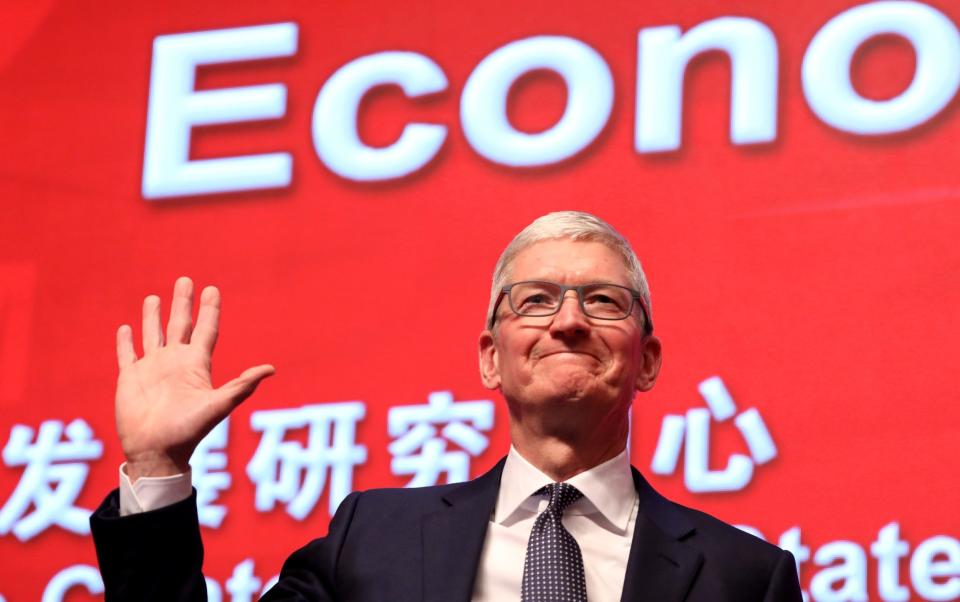Why Apple has a $300bn ‘Made in China’ problem

Eight words were stamped on the back of every iPhone for years: “Designed by Apple in California. Assembled in China.” The slogan illustrated the tech giant’s two power bases: its headquarters in Silicon Valley, and the manufacturing colossus it had become in the world’s factory.
Apple no longer features the words on the back of the iPhone. When the company launched a new supplier transparency website earlier this month, the phrase received an update: “Designed by Apple in California. Made by people everywhere.”
Apple is gradually weaning itself off China as a longstanding and mutually-beneficial relationship between the corporate giant and the country begins to fray.
Data released by the company last week, which outlined its relationships with hundreds of component and material providers, showed that while China remains the tech giant’s biggest single source of suppliers it is slowly turning elsewhere.
Last year, 156 of 465 manufacturing sites used by Apple suppliers were in China – 33.6pc. This was down from 35.2pc and 36.4pc in 2022 and 2021 respectively, and 46pc five years earlier. The company is relying more heavily on supply chains in countries such as Vietnam, Taiwan and South Korea.
The huge factories where those parts are turned into finished Apple products are largely based in China. But that too is changing.
In 2022, Apple assembled just 5pc of iPhones and other gadgets outside China, according to JP Morgan. However, the company reportedly hopes to make a quarter of iPhones in India as soon as next year. Last year’s new iPhone models were the first manufactured in both India and China from launch day.
Apple is not alone in seeking to move production away from China. Extended Covid lockdowns there during 2021 and 2022, as well as political pressure, have pushed manufacturers to look elsewhere. The American Chamber of Commerce in Shanghai found that last year that a fifth of US firms operating in the country were seeking to move manufacturing abroad, and two fifths were looking to redeploy investments originally planned for China.
But Apple’s move is symbolic. The company has been a totem of “made in China” for almost a quarter of a century and Tim Cook, its chief executive, has been seen as the architect of that strategy.
The shift is not just about manufacturing: Apple also faces growing concerns about its own business in the country.
According to figures from research company Counterpoint, Apple lost its position as market leader by smartphone sales in China in the first quarter of the year, falling to third place behind domestic manufacturers Vivo and Honor.
Its share of the Chinese smartphone market fell by 19.1pc to 15.7pc – its lowest since 2020.
The company has been squeezed by a resurgent Huawei, whose smartphone business came close to death but which has become a national champion after overcoming US sanctions to develop advanced microchips. Apple’s position has not been helped by Beijing telling government workers not to use iPhones and other foreign devices.
On Thursday Apple is expected to report quarterly results confirming the concerns. Analysts forecast the company will report sales of $15.9bn (£12.8bn) in China, down 11pc year-on-year and the third consecutive quarterly drop.
Concerns about Apple’s travails in China have seen the tech giant’s share price fall around 11pc so far this year, wiping more than $300bn off its market value.
There are further clouds on the horizon. China is becoming an increasingly assertive online regulator, ordering Apple to remove WhatsApp and Meta’s Twitter rival, Threads, from its App Store in the country earlier this month.
A US bill to ban the Chinese-owned app TikTok, signed by President Joe Biden last week, may increase pressure on Beijing to respond accordingly, perhaps by punishing an American company like Apple.
Donald Trump, meanwhile, has said he will impose more tariffs on Chinese imports if he wins next year’s election. Those iPhones still assembled in China risk falling foul of those rules.
If pressure builds on Apple to shift overseas more rapidly, it would not be easy, says Mark Zetter, an electronics industry consultant.
“There’s nowhere else on earth currently that has the dynamics and the supply chain infrastructure that China has. For one destination to compete with China, I just don’t see that happening in my lifetime,” he says.
Cook, for his part, has sought to keep the peace. “There’s no supply chain in the world that’s more critical to us than China,” he told the state-owned China Daily newspaper on a recent trip to the country. That will continue to be the case. But bit-by-bit, Apple is chipping away at its dependence on China.

 Yahoo Finance
Yahoo Finance 